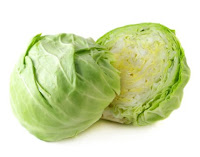Classification of vegetables
- The Gourd Family
- Seeds and Pods
Type of Mushrooms
Vegetables - Effect of cooking
- Freshness is vegetables’ most appealing and attractive quality
- Vegetable cookery - to preserve and enhance fresh flavor, texture and color, to prepare and serve vegetables that are not just acceptable but sought after
- Cooking affect vegetables in:
- Texture
- Flavor
- Color
- Nutrients
Vegetables – Cooking Guidelines
- Don’t overcooked
- Cook as close to service as possible
- If vegetables must be cooked in advance – slightly undercooked them, cool rapidly in cold water, drain and refrigerate
- Cut vegetables uniformly for even cooking
- Start with boiling, salted water
- Green and strong-flavored vegetables – cooked uncovered
- Tough and tender parts vegetables – need special treatment
- Don’t mix batches of cooked vegetables
- Never use baking soda with green vegetables
- To preserve color, cook red and white vegetables in a slightly acidic liquid
Vegetables – Controlling texture changes
- Changing the texture is one of the main purpose of cooking vegetables
- Fiber - cooking softens some of the fiber (cellulose and pectins)
- the amount of fiber varies
- fiber is made firmer by acids and sugars
- fiber is softened by heat and alkalies
· Starchs
- dried starch foods – Eg. dried legume, rice and macaroni products must be cooked in sufficient water, so the starch granules can absorb moisture and soften
- moist starchy vegetables – Eg. potatoes have enough moisture of their own, but they must still be cooked until the starch granules soften
- Doneness
- A vegetables done when it has reached the desire degree of tenderness
- Most vegetables, are best cooked very briefly, until they are crisp-tender / al dente
Vegetables – Controlling Flavor Changes
- Flavor loss – many flavors loss during cooking. It can be controlled in several ways:
- Cook for as short time as possible
- Use boiling salted water
- Use just enough water to minimize leaching
- Steam vegetables whenever appropriate
- Strong-flavored vegetable – leave uncovered to allow flavors to escape, use larger amounts of water
- Flavor changes
- cooking produces certain chemical change
- overcooking produces undesirable changes in members of the cabbage family
- Cooking and Sweetness
- serve immediately, don’t store young, fresh vegetables for too long
- for older vegetables, add a small amount of sugar to the cooking water
Vegetables – Controlling Color Changes
- Different pigments react in different ways to heat, acids and other elements during cooking
Color / Pigment | Vegetables | Acid | Alkali | Overcooked |
White / Flavone | Turnip Cauliflower | White | Yellow | Yellowish, gray |
Red / Anthocyanin | Beet Red Cabbage | Red | Blue or blue-green | Greenish blue, faded |
Green / Chlorophyll | Asparagus Spinach | Olive green | Bright green | Olive green |
Yellow and orange / Carotenoid | Carrot Tomato | Little change | Little change | Slightly faded |
Vegetables – Controlling Nutrient Losses
- Factors responsible to nutrient loss
- High temperature
- Long cooking
- Leaching (dissolving out)
- Alkalis (baking soda, hard water)
- Plant enzymes
- Oxygen
Vegetables – Standard of Quality
- Color – bright, natural colors
- Appearance on plate – cut neatly and uniformly
- Texture – cooked to the right degree of doneness
- Flavor – full, natural flavor and sweetness
- Seasoning – lightly and appropriately seasoned
- Sauces – should not be too thick or heavily seasoned
- Vegetable combinations – interesting combination (flavors, colors, shapes)attract customers
Vegetables – Handling Vegetables
- Washing
- wash thoroughly
- root vegetables – not peeled for baking, scrubbed very well
- wash green, leafy vegetables in several changes of cold water
- after washing, drain well and refrigerate lightly covered
- Soaking
- Don’t soak vegetables for long periods
- Brassica family and sprouts - soaked for 30 minutes in cold salted water to eliminate insects
- Limp vegetables – soaked briefly in cold water to restore crispness
- Dried legumes – soaked for several hours
- Peeling and cutting
- Peel as thinly as possible
- Cut vegetables into uniform pieces for cooking
- Peel and cut vegetable as close to cooking time as possible to prevent drying and loss of vitamins through oxidation
- Treat vegetables that brown easily with acid or hold under water
- Save edible trim for soups, stocks and vegetables purees
Vegetables – Processed Vegetables
- Handling Frozen Vegetables – check in particular for the following
- Temperature
- Large ice crystals
- Signs of leaking on the carton
- Freezer burn
- Handling Canned Vegetables – check in particular for the following:
- Reject damaged cans on receipt
- Know the drained weight
- Check the grade
- Handling Dried Vegetables
- Dried legumes
- soak overnight in 3 times their volume of water
- simmer, covered until tender
- Freeze-dried and other dehydrated vegetables
- may need to be soaked in cold or warm water
- instant dried products require only the addition of a boiling liquid
- follow manufacturer’s directions
Vegetables – Storage Vegetables
- Fresh Vegetables
- Potato & onion family – 10°C to 18°C in dark, dry place
- Other vegetables must be refrigerated
- Frozen Vegetables
- Store at 18°C in container until used
- Don’t freeze thawed vegetables
- Dried Vegetables
- Store in a cool place
- Well sealed and off the floor
- Canned Vegetables
- Keep away from sunlight, in cool and dry place
- Discard any damage cans
- Leftovers
- Don’t mix batches
- Store creamed vegetables for one day only
- Cool first before store








































Menarik. tringat time belajar food study part 2 dulu.
ReplyDeleteNice tips.... For someone who loves veggies or for some vegetarian, this website gives a lot of useful information.
ReplyDeletewow, nice tips! Love this!
ReplyDelete